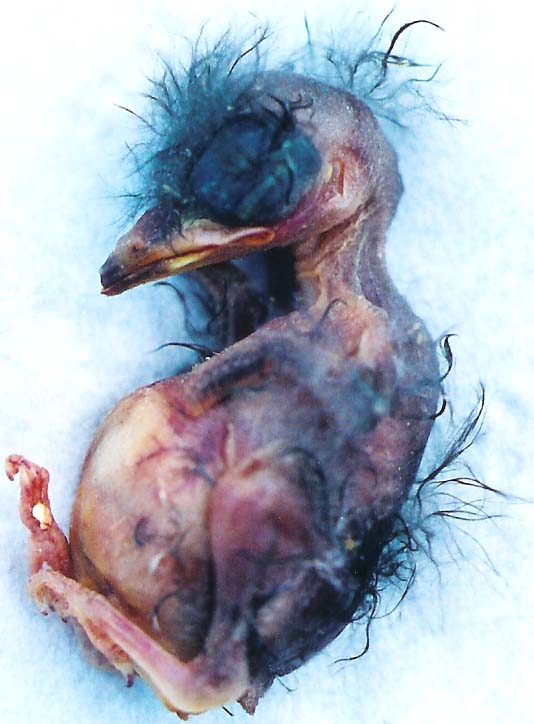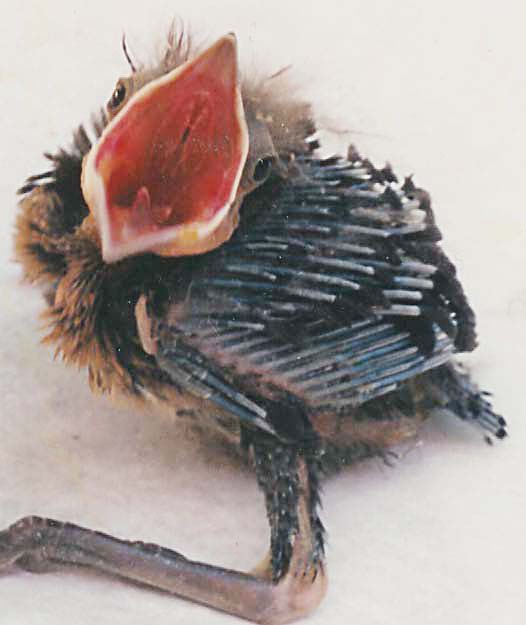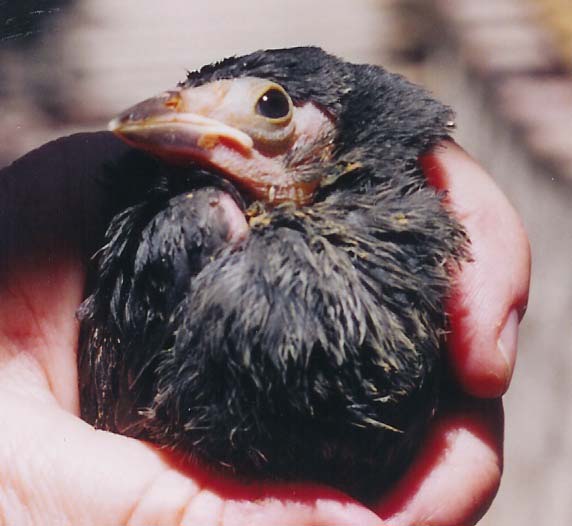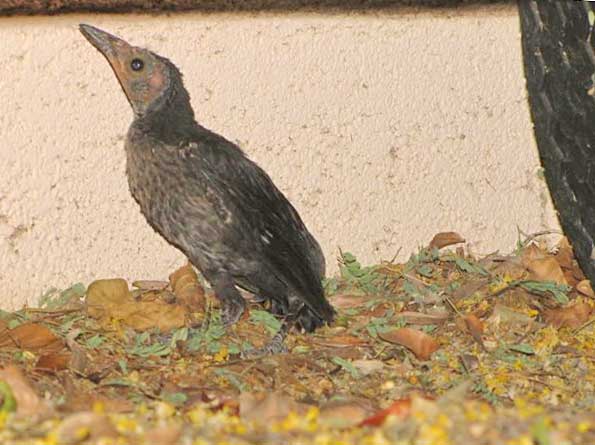Grackles
In the Phoenix area, we have Great-tailed Grackles. The male and females are different in size and coloring. Many people think they are two different kinds of birds.
The male is glassy back with iridescent shades of purple and blue and has a large wedge tail that turns like a boat's rudder when flying. It is often mistaken for a crow. The eyes are yellow.
The female is smaller and has dark brown and charcoal gray feathers without iridescence.
Grackles often nest in high trees. When a baby falls from the nest, the entire grackle family will try to guard the nestling by screeching and dive bombing any predators. Unfortunately they are unlikely to feed a baby on the ground so the nestling does have to be rescued. Renesting a fallen grackle baby is almost impossible due to the height of the tree and the fact they nest in colonies so getting it into the right nest is difficult.
Grackles prey on smaller birds and often attack fledgling doves that have left the nest. |
 Male Grackle
Male Grackle |
 Grackle Mother and Fledgling
Grackle Mother and Fledgling |

Female Grackle |
|
|
questions?  |

 Grackle Hatchlings
Grackle Hatchlings
No yellow on beak.
If the bird you have has yellow on the beak, it is not a grackle |

Inside of mouth is red.
(It may be a grayish color
if bird is dehydrated)
|

The toenails often get stuck in the bird's ear holes and eyes.
 Grackle Nestling Grackle Nestling |
 Grackle Nestling
Grackle Nestling |
|
|

Head and face feather out last |

Older Fledgling |
|
|
|
Upon hatching, a bird's age is categorized as:
Hatchling (newly hatched)
Nestling (too young to leave the nest)
Fledgling (can walk around, leaves the nest and fledges to the ground
Juvenile (teenager/young adult)
Adult (fully mature)
|
Last updated
November 1, 2022
 Contact East Valley Wildlife at 480-814-9339 ...
EastValleywildlife@gmail.com
or
Contact East Valley Wildlife at 480-814-9339 ...
EastValleywildlife@gmail.com
or 













